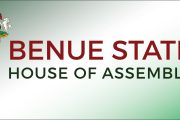By Molly Anders
LONDON — The year is 1997. The global financial crisis is a distant portent; mobile phones double as bludgeons; and cash transfers are still mostly conducted at Western Union to move money between family and friends abroad.

DFID staffers @ work
Twenty years ago today, the U.K. Department for International Development emerged from the Foreign & Commonwealth Office as an independent government department, represented in the prime minister’s 21-member cabinet by its very own secretary of state. The U.K.’s previous aid authority — the Ministry of Overseas Development — had spent three decades weaving in and out of Foreign and Commonwealth (FCO)’s purview. In 1997, it was granted an independent — albeit modest — budget of just over 2 billion pounds ($2.6 billion). DFID’s chief, an elected member of Parliament, would oversee the budget and report directly to the prime minister, at the time, the Labour Party’s Tony Blair.
From 1997 until today, the secretary of state’s most basic function is to lead the DFID ministerial team — which now includes three other members of Parliament, each responsible for particular areas of coverage within DFID — and set the overall strategy and direction of the 2,700-staff department. The secretary of state also works closely with the management team to account for DFID spending and operations.
But within that mandate, each secretary of state finds room for their own agenda. The role has so far hosted seven politicians, none of whom have held degrees or significant professional experience in the fields of international development or international relations. Yet these figures exert great influence over U.K. aid — often shaped by political winds and the national and global financial climate — and have helped give rise to development policies and practices that, 20 years later, reach far beyond DFID’s current 13 billion pounds portfolio.
Here, Devex explores the impact that each leader has had on U.K. aid — from the use of aid in the national interest to the focus on results — and where DFID is heading now.
Clare Short, 1997-2003:
The first and longest-serving head of DFID probably left the biggest mark on the department. Appointed by the newly elected Prime Minister Blair, under his hugely popular “New Labour” approach, Short was given wide latitude in building a radical development instrument. She placed a premium on partnership, recipient country ownership and deference to international development targets, earning praise from some academics and policy wonks for her willingness to take risks and implement largely untested tools for poverty reduction.

Clare Short, former MP and Secretary for International Development under Tony Blair
Relying heavily on general budget support — an approach shunned by DFID’s current leadership as being too difficult to track and giving too much agency to recipient countries — Short made the most of DFID’s broad mandate, the U.K.’s strong economy and the relative lack of scrutiny from Parliament and the public. As a result, she paid less attention to quantitative assessment of results.
Short is credited still for DFID’s continued focus on international collaboration in poverty reduction, an enduring pillar of its mission. It could be argued that she also laid the groundwork for the U.K.’s leadership in the global Make Poverty History campaign, and for the decision under subsequent leadership to meet the United Nations’ recommendation of spending 0.7 percent of gross national income on aid. She also committed the U.K. government to the Millennium Development Goals, vowed to keep aid “untied,” and made a point of distinguishing U.K. aid goals from the “national interest.”
Short’s heyday was not to last. In 2001, global terrorism thrust security and defense center stage. Having twice quit government before her appointment at DFID, Short had a history of voting with her feet. After the U.K. joined the United States’ invasion of Iraq in 2003, she resigned in protest for a third and final time.
Valerie Amos, 2003-2003:
Short was followed by DFID’s shortest-serving leader, Valerie Amos, who would resign six months later, having been appointed as leader of the House of Lords, positions she could not hold concurrently. Though her tenure was brief, Amos is often considered “the one who got away.” She was nominated within two years to head the United Nations Development Programme — although she lost her bid to Kemal Derviş — and was later appointed under secretary-general for humanitarian affairs and emergency relief coordinator at the U.N., continuing the U.K.’s unofficial legacy in the role. Amos is the only DFID head to have left politics to work in the development sector. She is now director of the School for Oriental and African Studies in London.
Hilary Benn, 2003-2007:
Perhaps because Benn inherited the Iraq reconstruction effort as Short’s successor under Blair, his tenure at DFID saw huge strides in the department’s work in humanitarian response and disaster relief. Having worked at DFID as a junior minister for a year under Short, Benn was an early advocate of early foreign direct investment in post-crisis and humanitarian contexts — a relatively novel idea at the time that would catch light a few years later.
Right out of the gate, Benn oversaw the response to a spat of earthquakes in Asia, as well as the response to the war in Darfur. In policy terms he tracked closely with Short in these crises, attempting to blend relief efforts into longer-term development goals, for example. He can also be credited with inaugurating DFID’s first increase toward the 0.7 commitment, squeaking it through just as the financial crisis loomed on the horizon.
Benn also began a still-popular pastime for DFID chiefs: calling for reform at the U.N., particularly UNOCHA and the U.N. High Commission for Refugees, which he said were “losing credibility” due to excessive bureaucracy and overlap, complaints that still sound familiar today. Despite this, Benn followed in Short’s footsteps, pivoting DFID toward the international stage and a more collaborative model for development, namely through DFID’s leadership in the Paris Declaration, the first truly international effort to set standards for development effectiveness.
As the financial crisis struck global markets, Benn and DFID began to feel the squeeze of looming austerity and increased public scrutiny. The government began to cut other budgets, and Benn struggled to explain to the public why DFID’s budget should continue to grow. It was here, in 2007, that one of DFID’s greatest challenges was born. In addition to driving interventions to the cutting edge and leading the international community in partnership-focused development, DFID needed to make the best case for aid, clearly and persistently to an invested and ever-more skeptical audience: the British public.
It was in this context that — in a move that would echo current DFID chief Priti Patel’s challenges to multilateral partners — Benn took a hard look at DFID’s monitoring and evaluation in both its multilateral and bilateral spending, and asked how effectively the department was using evidence of impact to rationalize spending.
Douglas Alexander, 2007-2010:
Despite these pressures, DFID’s budget did continue to grow. Labour appointed Prime Minister Gordon Brown to replace Blair, and Douglas Alexander took over DFID mid-way through the budget’s ascent to the 0.7 percent benchmark.
Alexander’s tenure marked the first real shift toward results-based management — which would become a DFID trademark — and pre-set goals and benchmarks. Beginning to resemble today’s perennial calls for better use of evidence, Alexander’s new-found focus on results “was part of what was to become a long retreat from Short’s ‘contribution and partnership’ approach,” according to Craig Valters and Brendan Whitty in their report on the politics of the results agenda for the Overseas Development Institute. Still, Alexander and Brown were mostly spared the intense levels of criticism that would plague their Conservative successors.

Andrew Mitchel MP
Andrew Mitchell, 2010-2012:
After the election of the Conservative Party in 2010, new Prime Minister David Cameron signaled early on his support for the 0.7 target. But every increase in the DFID budget elicited a fresh attack from the British media, particularly the right-leaning tabloid press, on DFID’s “outlandish” spending. The public seemed to be turning on DFID and didn’t appear comforted by Cameron’s manifesto commitments to increase scrutiny of aid spending and introduce an interesting new tool to reign in aid overspend, called “payment by results.”
Perhaps one of DFID’s most innovative and controversial tools, payment by results mandates that aid delivery partners can only be paid in full after they demonstrate an intervention’s impact. Cameron and subsequent administrations have acknowledged that it should only be used “where appropriate,” but that hasn’t stopped PBR striking fear into smaller nonprofits that lack the budgets to front costs for implementation and are left to offload the risk from DFID.
Cameron and Mitchell also placed the rhetoric of the “national interest” front and center of DFID’s work, wielding the soft power case that aid helps to combat terror and placates potentially costly conflicts.
Despite moving toward a more results-oriented model and introducing a mode of aid that arguably disincentivizes work in risky contexts and sectors, Mitchell continued Alexander and Short’s work on improving humanitarian response, and took to the international stage to berate other donors for not doing more for countries such as Pakistan after the 2010 floods. He introduced the Independent Commission for Aid Impact, an independent body responsible for scrutinizing aid spending on behalf of Parliament, and oversaw the final stretch of DFID’s bid to reach the 0.7 percent. Leaving the department with a budget of just under 12 billion pounds ($15.8 billion), he led the effort to enshrine the 0.7 commitment in law.
As tabloid criticism of DFID reached a fever-pitch in response, Mitchell and Cameron intensified their soft power push for aid in the British interest — a strategy that arguably primed the soil for future DFID leaders to make a similar case for aid as a deterrent of migration, and as a quid pro quo for better trade deals in the U.K.’s exit from the European Union.
Justine Greening, 2012-2016:
Following the lead of her predecessors, Greening also took up the “aid in the national interest” banner, and pledged to cut out unnecessary bureaucracy at DFID. Still, she developed a positive reputation among DFID staff, according to Valters and Whitty, for allowing them “more time to focus on real-world delivery.”
As DFID’s budget continued to grow in line with the country’s economy, attacks on its spending became more vicious. At the same time, the intense media scrutiny of DFID during this period unveiled some harsh truths. Greening is both credited and criticized for increasing DFID’s use of private contractors as delivery partners. For-profit groups such as Crown Agents and Adam Smith International have achieved measurable impact and have larger budgets better able to withstand the risk of schemes such as payment by results. Under Greening, these organizations became the conduit for more and more U.K. aid. But without the U.K. media’s scrutiny providing a platform for whistleblowers, problems such as Adam Smith International’s misuse of privileged information might have gone unchecked.
Greening is also credited for an increased focus on development finance, and for helping to reshape DFID’s development finance institution, the CDC. By reorienting CDC’s mandate to riskier geographies and incentivizing investments in more fragile, investor-scarce economies, Greening set the stage for tripling the CDC’s budget — an experiment that has drawn both praise and concern from the policy community.
While Greening did not remain at DFID long enough to see the first shifts toward the “cross-government strategy” under Cameron, she helped to introduce the commitment in 2015 to spend 30 percent of all U.K. aid through non-DFID departments by 2020. The reasoning is that greater coordination between aid-spending departments will result in less overlap, and will help improve transparency and impact in departments that struggle to spend aid effectively, such as the FCO. The results of the policy have been mixed. Many worry the decision was more the result of media accusations of waste in the aid budget than substantive evidence.
Finally, Greening was a fierce and adept advocate for fighting violence against women and girls, and perhaps did more to move the cause of ending female genital mutilation into the public sphere than any other development official in the G20.

MP Priti Patel, current Secretary for International Development
Priti Patel, 2016-Present:
After Cameron resigned following the U.K.’s referendum on EU membership, he was replaced by current Prime Minister Theresa May — and with May came Priti Patel, possibly the most determined standard bearer of aid in the national interest in DFID’s short history. Patel, who campaigned for the U.K.’s exit from the EU, argues that aid can be beneficial in leveraging better trade deals in post-Brexit negotiations — akin to tying aid — and in stemming irregular migration to the U.K. Recently, she has recommitted to renegotiating the OECD definition of official development assistance in order to allow an increased use of aid for security and counterterrorism purposes. In addition, Patel is charged with implementing the cross-government strategy introduced during Greening’s tenure.
Critics say that Patel has so far proved pliable under media pressure. Greening resisted unjust critiques of the impactful and well-reviewed media program supported by DFID and implemented by Girl Effect in Ethiopia, which included the music group Yegna to spread messages about women and girls’ rights. Derided as “the Ethiopian Spice Girls” by the Daily Mail, Patel buckled and ended the program.
Nonetheless, she has maintained Greening’s emphasis on development investment — overseeing the department’s first-ever economic development strategy — and she continues to push DFID toward riskier contexts and fragile states, while at the same time setting a high bar for rigor and evidence.
Patel’s critics are many, both inside and outside of DFID, most recently for the dilution of the department’s Civil Society Partnership Review and Bilateral Development Review, which lacked the detail and retrospection of their predecessors. Patel’s DFID is a far cry from Short’s vision of untied, independent and poverty-focused U.K. aid. But the department continues its reputation for having achieved numerous innovations over the past two decades, and has a history of finding a balance between demonstrable results and long-term development impact that might well win out.
Devex Newswire, the global development online platform from where this piece was reproduced introduced Molly, the author of this piece as its global development reporter




























